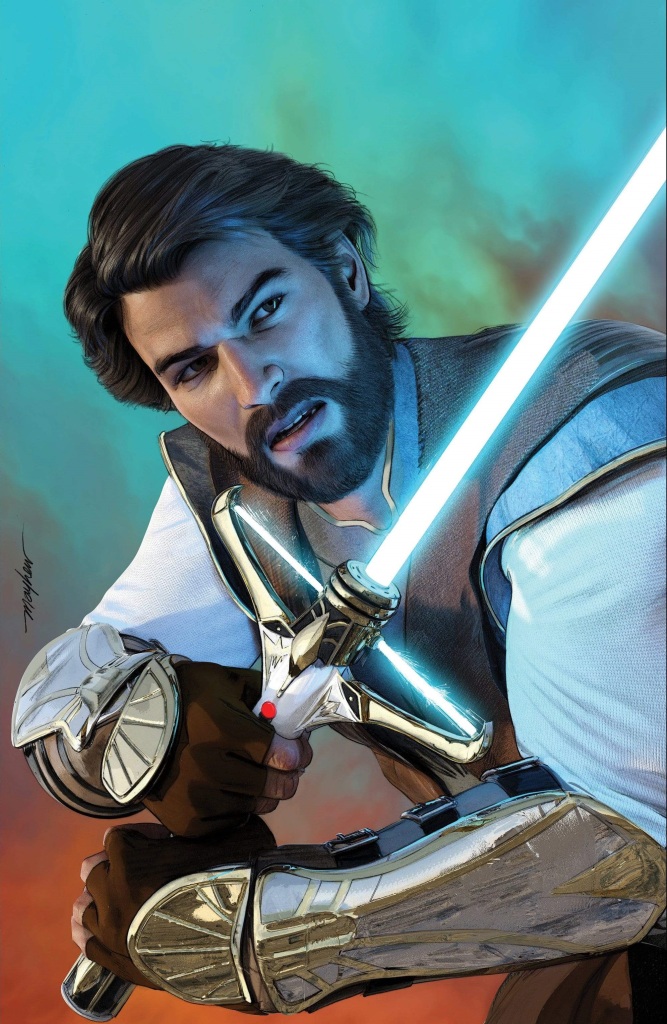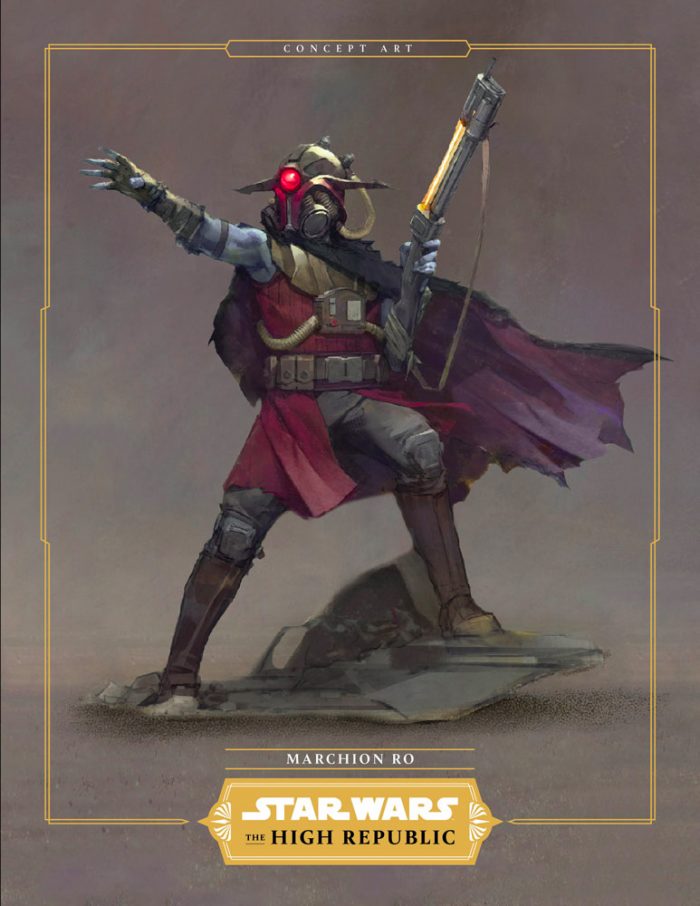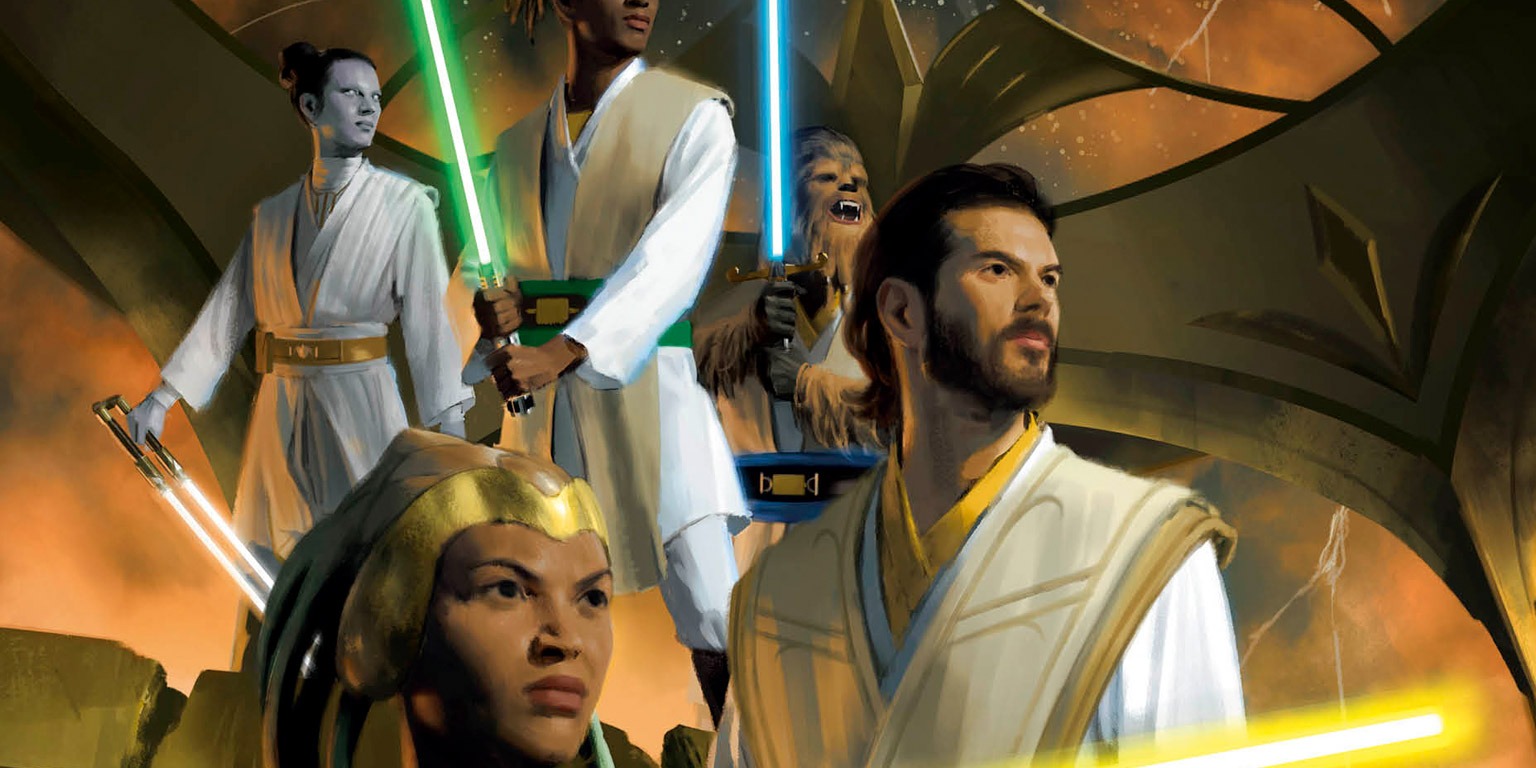I’ve been quite enjoying The High Republic writing so far but going into the final book of the first phase (titled Light of the Jedi), I wanted to know what the ultimate goal of the villainous Nihil was. Why do we care about them as antagonists? So far, the series has been an impressive multimedia project, spanning everything from comics to young reader novels to adult fiction. Each one has dealt with the threat of the Nihil in some way, shape, or form, but they’ve largely been portrayed as “space Vikings” with a mysterious agenda, pillaging and causing destruction left, right and center. Yet despite the high casualties they’ve caused since the books launched, I’ve never felt the Nihil to be dangerous. They’re disorganized and possess no Force powers. So why do we fear them? Now, with The Fallen Star, the adult novel of wave 3 written by Claudia Gray, we have some answers as we close out this first phase with some dire consequences.
The Fallen Star is a fairly simple novel at first glance. The Jedi believe Lourna Dee to be the Eye of the Storm and have chased her across the galaxy to bring an end to the vicious attacks that the Nihil have launched on the Republic, chiefly the attack on the fair from the last adult novel. But the Jedi are misinformed and the Nihil have been playing weak and dumb in order to launch their deadliest attack yet. If you’ve been keeping up with The High Republic, then the title of the book is a dead giveaway as to where this story goes. The treasured Starlight Beacon becomes under attack by radical members of the Nihil, specifically those loyal to Marchion Ro. His team of saboteurs crippled every single function on the station, including escape pods and communication. At the same time, they’ve unleashed the Great Leveler, introduced in The Rising Storm, a creature that can sever one’s connection to the Force. This ensures that the Jedi are blinded to the dark machinations happening under their noses and that the attack can happen on their watch, making the Jedi severely at a disadvantage for the first time in the series thus far.
Like the previous novels, The Fallen Star is a disaster novel. We know that Starlight Beacon is going to fall, it’s just a matter of how and when. As a reader with the knowledge of the previous novels, we know this too, but the tension and dread that Claudia Gray has subtly put into each chapter build the anticipation for the event to happen. What’s more is that unlike the previous novels, which had some sort of direct confrontation with the Nihil, that isn’t the case here. The Nihil are almost absent from this novel, save for the saboteurs aboard Starlight and Marchion Ro, who watches his plan unfold before his eyes. He doesn’t take any hands-on attack in this story, which results in the book not really having an antagonist and no development for him as a character beyond “destroy Jedi/Republic”. Sure, the destruction of Starlight is a result of the Nihil, but the calamity that follows is the main enemy of the story. Time is the true antagonist of the book as the Jedi and other characters onboard must find a way to either stop the descent or get everyone off.

And when it does, the slow fall of the station reminded me heavily of the sinking of the Titanic. In fact, the fact that the crowning jewel of the Republic is called Starlight Beacon further validates this sentiment, as the doomed ship was built by White Star Line. The only difference of course is that the sinking of the Titanic was accidental, whereas the sinking of Starlight Beacon was very much intentional. But as the crew races against time, new challenges and obstacles are presented and each protagonist must find a way to overcome them. Just about everyone involved with The Fallen Star is a returning face from previous novels, from the Jedi Stellen Gios (the highlight of the book), Bell Zettifar, Elzar Mann and Burry to the wildcard antagonists of Out of the Shadows Chancey Yarrow and Nan to the crew of the Vessel, Affie, Leox and the rock of many words, Geode, among many others. Hopefully, you haven’t gotten attached to some of the characters in The High Republic publishing initiative as The Fallen Star has many deaths, some of them shocking. The book is the first time that the Jedi don’t feel like superheroes and thanks to the presence of the Leveler, we see just how dependent they are on the Force to help people and themselves. Without it, they’re running blind and often headfirst into danger.

For such a bleak book so heavy on plot and a singular event, The Fallen Star never feels confined or repetitive. The story bounces around the station to see many points of view, from seasoned Jedi to young apprentices to regular space haulers and prisoners of war. Everyone has some sort of issue or baggage, such as feeling loss, regret and even temptation of the Dark Side. So even with all the chaos, the characters still come first.

But despite the severity of the action, the event (which is a major devastating blow to the Republic) felt smaller in scale than the attacks in Light of the Jedi and The Rising Storm. I didn’t feel much of a sense of urgency, despite the characters telling me so. The book series so far has also been telling us about the importance of Starlight Beacon, but we’ve yet to really see it in action or learn much about it beyond its function and how much it’s worth as a symbol. So when it goes down, it’s hard to be emotionally invested. Apart from the staff of Jedi, including Avar Kriss (sometimes), who else resides on the station? Is it a home or a pit stop for the Jedi? We haven’t had much time there, so it’s a bit hard to care. If the Nihil attacked, say the Jedi temple on Coruscant, I’m sure I’d be singing a different tune, but as it stands, Starlight falling didn’t have the emotional impact that I think the initiative was hoping for. Also, this is the first novel that really made me feel I had to be reading everything to fully understand the story at large. We’re told the Drengir, from Into the Dark, are not really an issue anymore, but when did that happen? Seeing as I’ve read everything but the comics and the Adventure series, I would imagine that development came there, but can’t be certain for sure. I’m also sure that Avar Kriss’ quest to find Lourna Dee is also in another story.
With the next phase of High Republic novels, dubbed “Quest of the Jedi, being a surprise prequel, set some 150 years before the first phase, we won’t get any closure or answers to the plot points established over the past year for quite some time. This is a bit of a bummer, but hopefully, that prequel will establish a lot of justifications for the actions that we’ve seen so far. As it stands, Phase I of the High Republic is a great and fun ride, with some memorable characters, but it doesn’t quite stick the landing in terms of closure or emotional investment.
